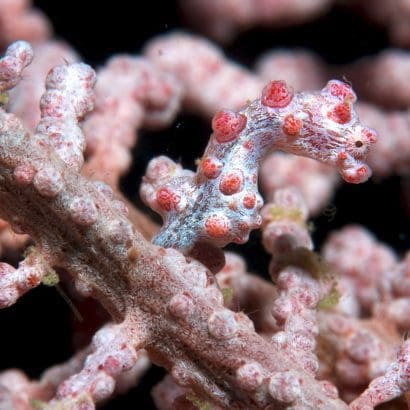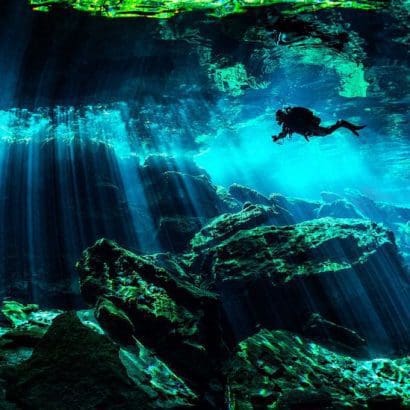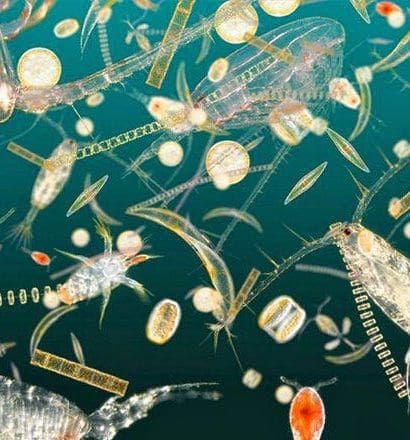
The world’s oceans are teeming with life, from the majestic whales to the colorful coral reefs. Yet, amidst this vast aquatic realm, there exists a group of organisms that may appear insignificant to the naked eye but possess an immense influence on our planet’s ecosystems. They are the plankton, the smallest beings with the greatest impact.
Plankton, comprising a diverse community of microscopic organisms, plays a vital role in the delicate balance of marine environments. Despite their diminutive size, these tiny organisms hold the key to the sustenance and survival of countless species, as well as the overall health of our planet.
In this article, we will delve into the world of plankton, exploring their definition, classification, and most importantly, their ecological significance. We will unravel the immense impact that these minuscule creatures have on the intricate web of life in our oceans, and how they contribute to the regulation of our climate. Furthermore, we will examine the remarkable biodiversity within the planktonic realm and the implications it holds for our understanding of marine ecosystems.
Contents
What is plankton?.🐟
Plankton refers to a community of microscopic organisms that float in bodies of water. These organisms are too small and weak to swim against the current, relying on oceanic currents and tides to transport them. Despite their small size, planktonic organisms are of immense importance in marine ecosystems and have a significant impact on the health and functioning of our oceans.
Plankton can be broadly classified into two main categories: phytoplankton and zooplankton.
Phytoplankton:
These are microscopic plants, primarily algae, that form the base of the marine food chain. They harness sunlight through photosynthesis to produce organic matter and release oxygen as a byproduct. Phytoplankton serve as the primary producers in aquatic ecosystems, converting inorganic nutrients, such as carbon dioxide and nitrogen compounds, into organic compounds. They play a vital role in regulating the Earth’s climate by absorbing large amounts of carbon dioxide, thereby helping to mitigate the impacts of climate change.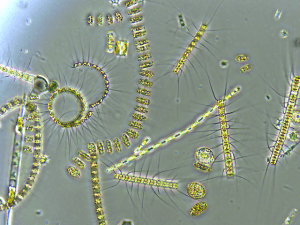
Zooplankton:
Unlike phytoplankton, zooplankton consists of tiny animals that feed on phytoplankton or other smaller zooplankton. They encompass a wide range of organisms, including larvae of various marine species, small crustaceans, jellyfish, and larval fish. Zooplankton serve as a crucial link between the primary producers (phytoplankton) and higher trophic levels in the marine food web. They are an essential food source for many larger organisms, transferring energy and nutrients through the ecosystem.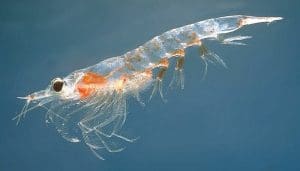
Ecological Importance of Plankton.🐟
Plankton holds immense ecological importance in marine ecosystems due to its fundamental role in various critical processes. Here are some key points highlighting the significance of plankton:
Fundamental Role in the Marine Food Web:
Plankton serves as the foundation of the marine food chain. Phytoplankton, the primary producers, convert sunlight and nutrients into organic matter through photosynthesis. They are consumed by zooplankton, which, in turn, become food for larger organisms such as fish, whales, and other marine animals. Planktonic organisms are essential for sustaining the entire marine food web, supporting the abundance and diversity of higher trophic levels.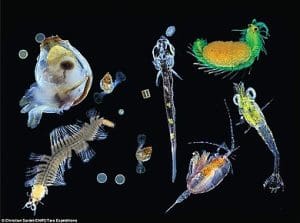
Oxygen Production and Carbon Dioxide Absorption:
Phytoplankton, through photosynthesis, contribute significantly to global oxygen production. They generate a substantial portion of Earth’s oxygen, estimated to be around 50-80%. Additionally, as phytoplankton photosynthesize, they absorb carbon dioxide from the atmosphere, acting as a vital carbon sink. This process helps regulate the global climate by mitigating the effects of greenhouse gases and reducing the impacts of climate change.
Nutrient Cycling:
Plankton plays a crucial role in nutrient cycling, particularly for essential elements like nitrogen and phosphorus. Phytoplankton assimilate these nutrients from the water, incorporating them into their cells. When zooplankton and other organisms consume phytoplankton, they transfer these nutrients up the food chain. Eventually, through processes like excretion and decomposition, the nutrients are returned to the water, making them available again for phytoplankton and other organisms. This cyclic process, known as the biological pump, maintains the balance of nutrients in the oceans, influencing primary productivity and the overall health of marine ecosystems.
the ecological importance.
Understanding the ecological importance of plankton is crucial for effective ecosystem management, conservation efforts, and the sustainable use of marine resources. By protecting and preserving planktonic communities, we can ensure the health and resilience of our oceans and the myriad of species that depend on them.
Biodiversity in Plankton.🐟
Plankton exhibits remarkable biodiversity, encompassing a wide range of organisms that form an intricate and diverse community. Here is some general information about the biodiversity within plankton, along with the significance of studying and understanding it:
Diversity of Organisms:
Plankton includes a vast array of organisms, such as bacteria, microscopic algae, protozoa, small crustaceans, larvae of various marine animals, and even some jellyfish. These organisms come from different taxonomic groups and exhibit various sizes, shapes, and physiological characteristics. The planktonic community represents a microcosm of life in the oceans, showcasing the incredible adaptations and interactions that have evolved over millions of years.
Importance of Studying Plankton Biodiversity:
Studying and comprehending the biodiversity of plankton is of paramount importance for the preservation of aquatic ecosystems’ health. Here are some key reasons why:
a. Indicator of Ecosystem Health:
Plankton serves as an indicator of ecosystem health and can provide valuable insights into environmental conditions and changes. Alterations in plankton biodiversity and abundance can indicate disturbances in the ecosystem, such as pollution, climate change, or overfishing. Monitoring these changes can help identify potential threats and guide conservation and management strategies.
b. Trophic Interactions and Food Web Dynamics:
Planktonic organisms play a crucial role in trophic interactions and the functioning of marine food webs. Understanding the diversity and dynamics of planktonic species helps unravel the complex relationships between different trophic levels, from primary producers to top predators. This knowledge aids in managing fisheries, predicting ecosystem responses to environmental changes, and protecting endangered species.
c. Biotechnological Potential:
Planktonic organisms have significant biotechnological potential. Many marine-derived compounds and bioactive substances with pharmaceutical, nutritional, and industrial applications have been discovered from various planktonic species. Exploring the biodiversity of plankton can unveil novel compounds and genetic resources that may have valuable applications in various fields.
Preserving and conserving.
Preserving and conserving the biodiversity of plankton is essential for maintaining the overall health and functioning of marine ecosystems. Protecting the habitats and conditions necessary for planktonic organisms to thrive ensures the sustainability of food webs, nutrient cycling, and the intricate balance of marine life.
Impact of Climate Change on Plankton.🐟
Climate change poses significant challenges to the distribution, composition, and overall well-being of plankton. Here is some general information about the impact of climate change on plankton, along with specific points regarding its effects:
Altered Distribution and Composition:
Climate change can disrupt the distribution patterns of planktonic species. Rising sea temperatures, changes in ocean currents, and shifts in nutrient availability can cause changes in the geographical range and abundance of different planktonic organisms. As a result, some species may expand their range, while others may experience reduced populations or even local extinctions. These changes can have cascading effects throughout the food web and disrupt ecosystem dynamics.
Negative Effects of Global Warming:
Global warming, a key aspect of climate change, brings several adverse effects that can impact plankton and marine ecosystems:
a. Ocean Acidification:
Increased carbon dioxide emissions lead to the acidification of the oceans. Rising CO2 levels cause seawater to become more acidic, affecting the ability of planktonic organisms with calcium carbonate shells or structures to form and maintain their protective coverings. This can lead to reduced growth rates, impaired reproduction, and increased vulnerability to predation for many species of plankton.
b. Nutrient Limitation:
Changes in oceanic conditions, such as altered nutrient availability, can negatively affect plankton. Rising sea temperatures can lead to decreased vertical mixing and reduced nutrient upwelling from deeper waters, limiting the availability of essential nutrients for phytoplankton. This can result in decreased primary productivity and subsequent impacts on the entire food web.
c. Disruption of Phenology and Trophic Interactions:
Climate change can alter the timing and synchronization of biological events, such as the timing of plankton blooms and the arrival of zooplankton larvae. Such disruptions can have far-reaching consequences for trophic interactions, affecting the survival and reproductive success of species throughout the food web.
The impacts of climate.
Understanding the impacts of climate change on plankton is crucial for predicting and managing the consequences for marine ecosystems. Monitoring changes in plankton communities, studying their responses to environmental shifts, and incorporating this knowledge into conservation and management strategies can help mitigate the negative effects of climate change and enhance the resilience of marine ecosystems.
Research and Scientific Advances on Plankton.🐟
Research on plankton and scientific advancements have significantly contributed to a better understanding of these microscopic organisms and their crucial role in marine ecosystems. Here is some general information about research efforts, along with specific points highlighting recent discoveries and their implications:
Scientific Efforts and Technologies:
Scientists have dedicated considerable efforts to studying and comprehending plankton, employing various technologies and methodologies. Some notable approaches include:
a. Remote Sensing Systems:
Remote sensing technologies, such as satellite-based observations and oceanographic sensors, provide valuable data on plankton distribution, abundance, and productivity over large spatial scales. These systems allow researchers to monitor changes in plankton communities and study their responses to environmental factors like sea surface temperature, nutrient availability, and light conditions.
b. Genetic Studies:
Advances in genetic techniques have revolutionized our understanding of planktonic biodiversity. DNA sequencing and metagenomic approaches enable researchers to identify and classify plankton species, investigate genetic diversity within populations, and uncover new taxa. Genetic studies also shed light on the evolutionary relationships among planktonic organisms and their adaptations to environmental conditions.
Recent Discoveries and Implications:
Recent research on plankton has unveiled intriguing findings with significant implications for science and marine conservation:
a. Microbial Plankton:
Studies have revealed the critical role of microbial plankton, including bacteria and viruses, in marine ecosystems. These microscopic organisms play a vital role in nutrient cycling, organic matter degradation, and the regulation of microbial communities. Understanding the intricate interactions among microbial plankton can provide insights into ecosystem functioning and resilience.
b. Planktonic Response to Environmental Change:
Research has shown that plankton communities are highly sensitive to environmental changes, including warming temperatures, ocean acidification, and altered nutrient availability. Shifts in planktonic composition and phenology have been observed, which can have cascading effects on higher trophic levels, fisheries, and overall ecosystem productivity.
c. Harmful Algal Blooms (HABs):
Recent studies have deepened our understanding of harmful algal blooms, which are detrimental to marine ecosystems and human health. Scientists have identified factors influencing the occurrence and intensity of HABs, such as nutrient pollution, climate variability, and oceanographic conditions. This knowledge helps inform strategies for predicting, mitigating, and managing the impacts of HABs.
The importance of continued scientific.
These research efforts and discoveries underscore the importance of continued scientific exploration and monitoring of planktonic communities. By gaining a deeper understanding of plankton and their responses to environmental changes, scientists can provide valuable insights for marine conservation, ecosystem management, and the sustainable use of ocean resources.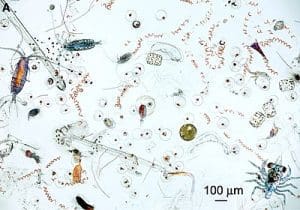
Plankton: Small but Mighty in Aquatic Ecosystems.
In conclusion, the significance of plankton cannot be underestimated. Despite their small size, these tiny organisms have a mighty impact on aquatic ecosystems. Plankton serves as the foundation of the marine food web, supporting the survival and growth of numerous species. They are not only essential for the sustenance of marine life but also play a crucial role in regulating our planet’s climate.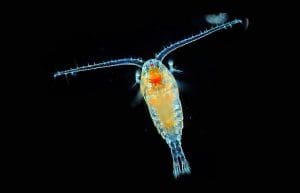
The diversity within the planktonic community is astounding, encompassing a wide range of organisms, from bacteria and microscopic algae to larval forms of marine animals. Studying and understanding the biodiversity of plankton is vital for preserving the health and balance of aquatic ecosystems. It allows us to monitor changes, identify threats, and implement conservation measures to safeguard these fragile communities.
Climate change poses significant challenges to plankton, impacting their distribution, composition, and overall well-being. Rising sea temperatures, ocean acidification, and nutrient limitations can have detrimental effects on planktonic organisms and, consequently, on the entire marine food web. It is crucial to address climate change and reduce greenhouse gas emissions to protect the delicate balance of planktonic communities and ensure the health and vitality of our oceans.

